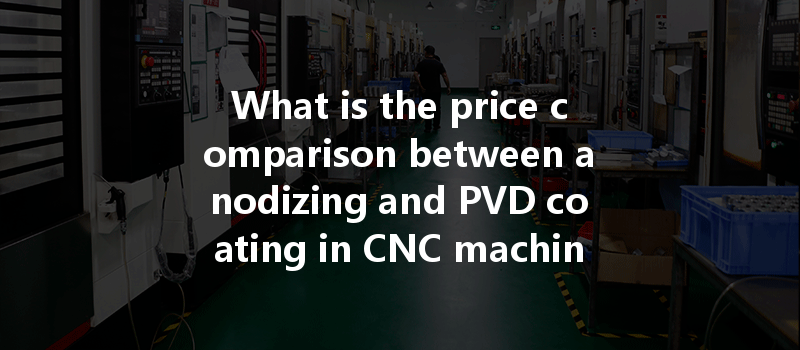Did you know that surface finish can significantly influence a product’s performance and aesthetics? A recent statistic highlights that as much as 70% of consumer decisions are impacted by these factors. In CNC machining, the choice of surface treatment not only affects the product’s durability but also its visual appeal, which can ultimately affect sales. In this blog, we’ll explore a crucial aspect of CNC machining—surface treatments: specifically, the price comparison between anodizing and Physical Vapor Deposition (PVD) coating.
To appreciate the price comparison between anodizing and PVD coating, we must delve into what these processes are.
1.1 Anodizing
Anodizing is an electrochemical process that converts the surface of a metal, often aluminum, into a decorative, durable, corrosion-resistant, anodic oxide finish. This thickens the natural oxide layer and offers a range of aesthetic and protective benefits:
1.2 PVD Coating
Physical Vapor Deposition (PVD) coating is a vacuum coating process that produces thin films. During PVD, materials that will coat the workpiece are vaporized and then condensed onto the surface of the part, resulting in a robust and visually appealing finish.
1.3 Key Differences
While both processes aim to improve the outer finish and durability of components, they serve different purposes. Anodizing is primarily used for aluminum and focuses on enhancing corrosion resistance and adhesion properties, while PVD is versatile and can be applied to various materials, often emphasizing aesthetic appeal and wear resistance.
2.1 Factors Influencing Costs
The cost of anodizing vs. PVD coating can vary based on multiple factors, including:
2.2 Anodizing Cost Breakdown
Understanding the costs associated with anodizing can help manufacturers effectively plan their budgets:
2.3 PVD Coating Cost Breakdown
PVD coating can often be perceived as more costly due to its technological requirements:

When considering the overall costs associated with anodizing versus PVD coating, one must weigh each on a spectrum of requirements and budget constraints.
Choosing between anodizing and PVD coating can be a matter of analyzing your project needs:
4.1 Application Performance Needs
4.2 Aesthetic Considerations
4.3 Environmental Impacts
Both processes present different environmental considerations:
As we weigh the performance and pricing, examining case studies where companies have implemented either anodizing or PVD can yield useful insights.
5.1 Aerospace Industry
In aerospace applications, components require extensive durability and weight considerations. PVD coatings have been adopted due to their ultra-hard surfaces, even if they are pricier. The trade-off of increased initial costs versus long-term benefits continues to sway decisions in such demanding industries.
5.2 Consumer Electronics
Consumer products, particularly in consumer electronics—like smart devices—gravitate towards anodized coatings. The cost-effective nature of anodizing, combined with the variety of colors available, meets the aesthetic demands of consumers while remaining within budget.
To summarize, knowing the cost implications and performance characteristics of anodizing and PVD coating can empower you to make sound decisions during the CNC machining process. Understanding these treatments is pivotal in optimizing your production processes, ultimately leading to improved product quality and increased sales potential.
By considering factors like long-term performance, aesthetic choice, environmental impact, and budget constraints, businesses can tailor their surface treatment choice effectively to fit their needs. This knowledge aids in developing a competitive edge in the fast-paced manufacturing industry.
In conclusion, whether you opt for anodizing or PVD coating, each process offers unique advantages that can significantly enhance your CNC machining outputs. It’s vital to engage in thorough research and reflection before making a choice, as it not only affects costs but can also have profound effects on product performance and customer satisfaction. Engaging with the right partners is essential in navigating these complexities to find the best fit for your project—because, in the end, the choice of surface treatment is more than just a finish; it’s about investing in quality, durability, and success.






